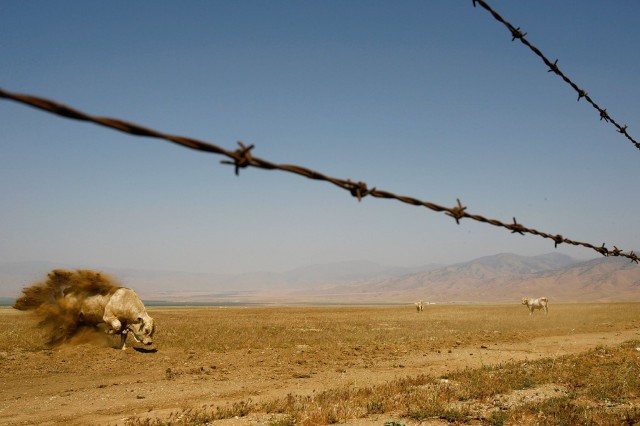“What we’ve seen is a steady increase in the number of diagnosed cases of valley fever, or coccidioidomycosis,” said Dr. Thomas Frieden, director of the CDC. “We don’t know why that’s happened and there’s a lot that we need to learn.”
Symposium participants called the announcement a major development in the fight against valley fever. The news comes after U.S. Rep. Kevin McCarthy, (R-Bakersfield), who spearheaded the symposium, courted the leaders of the CDC and NIH for months about valley fever.
The trial will involve some 1,000 people diagnosed with community-acquired pneumonia, the most common presentation of valley fever. Half will be randomly chosen to receive either a traditional antibiotic used to treat bacterial pneumonia or placebo; the other half will be treated with the antibiotic plus fluconazole, an anti-fungal medication frequently used to treat valley fever.
The patients will be tested immediately and then every two weeks to see if they have valley fever and which treatments prove most effective. Collins said the trial will spread awareness about the disease and educate people about diagnostics and treatment.
“We all recognize that there’s more that needs to be done. There’s so many unknowns (about valley fever),” Collins said. “We don’t know exactly what the right treatment is for people who become infected with this fungus.”
Dr. Royce Johnson, Kern Medical Center’s chief of infectious disease, called the trial exciting news.
“There is a real difference of opinion about who should be treated, when they should be treated and how much they should be treated with,” Johnson said. “It would answer some of those questions.”
After the trial was announced to reporters, about 200 people attended a public forum. The gathering brought together people battling the disease, doctors working to developed a vaccine, and past and present politicians.
“This is a particularly unusual (event) because this is not as common a condition as many of the things that Dr. Frieden and I spend our time worrying about,” Collins said. “But it is a compelling situation because of the rise in (reported cases) and the fact that there’s so many unknowns that could be answers so it seems like the right time to get all of the smart people together and see what we can do.”
Men, women and one little girl shared their stories of living with valley fever. Many asked specific questions about their own condition and symptoms, telling stories of misdiagnosis and uncertainty.
Darrin Blackmon, Sr., of Buttonwillow brought a plastic bag filled with medications and bills he has accrued while dealing with the disease for one year.
“It’s an honor, it’s a privilege to still be living,” Blackmon said after briefly meeting Frieden. “When I first got it, oh your body (makes) you feel like you (are) dying already.”
Lisa Limbeck of Rosamond has lived with valley fever for five years, and the virus has settled in her brain. She says she's had several brain operations and takes daily antifungal treatments. She copes with chronic pain which she compared to a day-long severe migraine.
“I just wanted to hear other stories of people who’ve battled what I’ve gone through and how they’re coping and how they’re living and how it’s changed their world because I know it’s changed mine,” she said.
She said she hoped public health leaders would be open to new ideas for advancing testing and technologies to understand valley fever.
